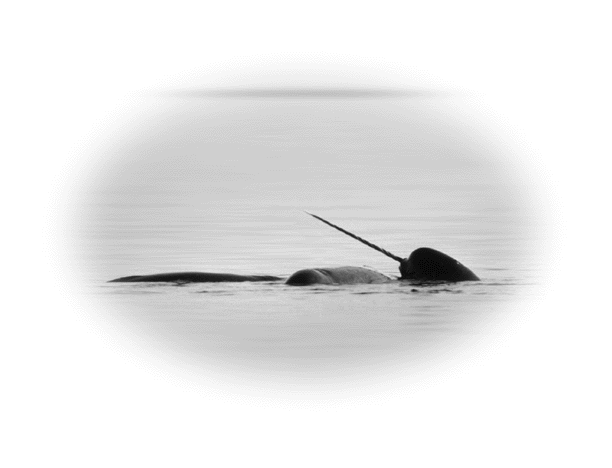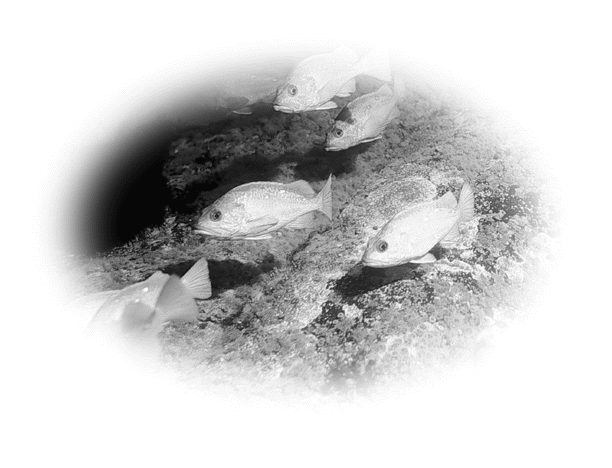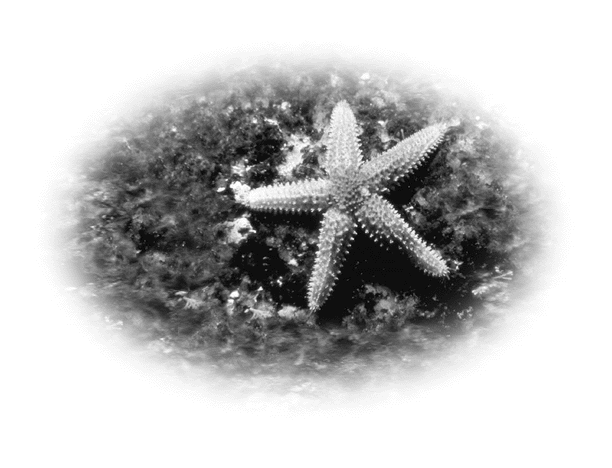Marine Protected Areas Policy - Fisheries and Oceans Canada - March 1999
Table of Contents
- Canada's Commitment to Marine Protection
- MPAs under the Oceans Act
- Program Overview, Goals and Objectives
- Code of Practice
- Developing a National System of Protected Areas for the Marine Environment
Canada's Commitment to Marine Protection
Canada's history has been defined by its surrounding marine environment. The Arctic, Pacific and Atlantic Oceans are important to our culture, our economy, and our national identity. Of equal significance are internal waters having large marine components such as the St. Lawrence Estuary and the Gulf of St. Lawrence, Hudson Bay and James Bay.
The richness and biodiversity of Canada's oceans provide enormous potential for both present and future generations. Our continental shelf is one of the largest in the world. The marine ecosystems found there have a remarkable diversity of species, including commercial and non-commercial fish, marine mammals, invertebrates and plants. Canada's oceans provide numerous opportunities for commercial, recreational and aboriginal fisheries; tourism; transportation; mineral production; education; and biological and technical research.


In recent years, growth in Canada's ocean sector has resulted in increased pressures on the ocean environment. The biodiversity and ecological integrity of many marine ecosystems are being threatened. There is a need to proactively conserve and protect marine ecosystem functions, species, and habitats for future generations.
Achieving sustainability in the harvest of living ocean resources ultimately depends on healthy, productive ecosystems. A new approach to oceans management is needed, one that takes an ecosystem approach rather than a sectoral one. In recognition of this, the Government of Canada works with other countries to address concerns about the marine environment. Internationally, Canada has demonstrated its commitment by endorsing conventions that pursue the goals of conservation and protection, including the United Nations Convention on Biological Diversity and the Global Program of Action for the Protection of the Marine Environment from Land-Based Activities.
It is equally important that the Government of Canada work with Canadians to manage activities in or affecting the marine environment. This vision of oceans management is embodied in the Oceans Act, which came into force in January 1997. The Act confirms Canada's role with respect to oceans management, specifying the need to integrate marine conservation with development activities to maintain healthy ecosystems.
Working together with interested Canadians, the Minister of Fisheries and Oceans will lead and facilitate the development and implementation of a national strategy for the management of estuarine, coastal, and marine ecosystems. The Oceans Strategy will be based on the principles of sustainable development, integrated management and the precautionary approach.
In addition to the Oceans Strategy, the Oceans Act identifies three complementary initiatives for the conservation and protection of the oceans. These legislated initiatives are:
- the Marine Protected Areas program, which entails leading and coordinating the development and implementation of a national system of marine protected areas, including designating areas for special protection for reasons specified in the Oceans Act.
- the Integrated Management program, which entails leading, facilitating and implementing plans for the integrated management of all activities or measures in or affecting estuaries, coastal and marine waters; and
- the Marine Ecosystem Health program, which entails establishing marine environmental quality guidelines to support the implementation of these plans.
Definition under the Oceans Act
Canada's Oceans Act (Section 35 (1)) states:
A marine protected area is an area of sea that forms part of the internal waters of Canada, the territorial sea of Canada or the exclusive economic zone of Canada and has been designated under this section for special protection for one or more of the following reasons:
- the conservation and protection of commercial and non-commercial fishery resources, including marine mammals, and their habitats;
- the conservation and protection of endangered or threatened marine species, and their habitats;
- the conservation and protection of unique habitats;
- the conservation and protection of marine areas of high biodiversity or biological productivity; and
- the conservation and protection of any other marine resource or habitat as is necessary to fulfill the mandate of the Minister (of Fisheries and Oceans Canada).
Program Overview

Canada's marine ecosystems are vast and diverse, supporting many different activities. Marine Protected Areas under the Oceans Act must, therefore, satisfy a range of needs in a variety of jurisdictional settings. As a result, the Program uses a flexible approach to the design and management of these areas. The National Framework for Establishing and Managing Marine Protected Areas provides the general approach to MPAs across Canada. Specific program details concerning the conservation, protection and use of the marine environment and its resources will be developed and implemented at the DFO regional level.
Management plans for individual MPAs will be developed with involvement of local resource users, and interested and affected parties. They will set forth details on such issues as partnering responsibilities, funding arrangements, jurisdictional coordination, zoning, protection standards, regulations, permissible activities, enforcement, monitoring and research, and public awareness. MPAs will differ from one another; some may be strict no-take zones while others may be sustainably managed zones. This type of flexible approach is needed in order to meet the range of conservation and protection requirements of MPAs.
To ensure that MPAs are part of a comprehensive initiative to protect the health and function of marine ecosystems, they should be developed and established within the context of integrated management planning. Such planning considers the protection of each area in light of both environmental and socio-economic effects.
Objective
To conserve and protect the ecological integrity of marine ecosystems, species, and habitats through a system of Marine Protected Areas, as per the Oceans Act.
Goals
- To proactively conserve and protect the ecological integrity of each MPA site.
- To contribute to the social and economic sustainability of coastal communities by providing for uses which are compatible with the reasons for designation.
- To further knowledge and understanding of marine ecosystems.
Code of Practice
In implementing the Marine Protected Areas program, Fisheries and Oceans will:
- Adhere to the defined objective and goals of the MPA program
- Establish MPAs in a fair and transparent manner
- Adopt the principles of sustainable development, integrated management and the precautionary approach in decision-making
- Base decisions on the best available scientific information and traditional ecological knowledge
- Adopt an ecosystem approach to planning, establishing, and managing MPAs. This will include coordinating across jurisdictions and organizations and recognizing the interaction of marine ecosystems with the land
- Plan and establish MPAs with the active participation of interested and affected parties, building upon existing programs and institutional or community structures wherever possible
- Promote the use of partnering arrangements in managing MPAs
- Evaluate the design, management and effectiveness of MPAs on a regular basis with respect to their stated goals


Developing a National System of Protected Areas for the Marine Environment
Canada's Oceans Act (Section 35 (2)) states:
For the purposes of integrated management plans ... the Minister (of Fisheries and Oceans) will lead and coordinate the development and implementation of a national system of marine protected areas on behalf of the Government of Canada.
The Department of Fisheries and Oceans, Parks Canada and Environment Canada (Canadian Wildlife Service) all have mandated responsibilities to create protected areas in the marine environment. Since the Oceans Act names the Minister of Fisheries and Oceans as the lead federal authority responsible for oceans, DFO will lead in the development of a national system of marine protected areas* incorporating the programs of all three departments. Since management of marine ecosystems is a shared responsibility, it is essential to work together to conserve and protect these areas.
The different federal protected area programs share a common objective: to further conservation and protection of living marine resources and their habitats. By coordinating the policies, programs and prospective sites amongst the different federal agencies, the integrity and health of Canada's estuarine, coastal and marine waters will be better maintained. The booklet Working Together For Marine Protected Areas: A National Approach describes the federal programs in greater detail.
Federal Departments and Programs
Fisheries and Oceans
- Marine Protected Areas
- Program Focus: Conserving and protecting marine species, habitats and ecosystems.
Parks Canada
- Marine Conservation Areas
- Program Focus: Protecting representative examples of natural and cultural heritage
Environment Canada (Canadian Wildlife Service):
- Migratory Bird Sanctuaries
- National Wildlife Areas
- Marine Wildlife Areas
- Program Focus: Protecting major marine and nearshore areas for wildlife, research, conservation and public education.
Note:
Within this document, the name 'Marine Protected Area, MPA' refers specifically to the DFO program under the Oceans Act. The name 'marine protected area' is a generic term referring to protected areas in the marine environment created by any agency.
Published by:
Marine Ecosystems Conservation Branch
Oceans Directorate
Ottawa, ON K1A 0E6
DFO / 5870
Car. No. Fs23-365 / 1999
ISBN 0-662-64210-4
- Date modified: